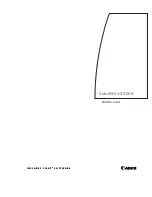
Dell EMC VxRail Appliance Operations Guide
© 2017 Dell Inc. or its subsidiaries.
DELL EMC VXRAIL
TM
APPLIANCE
OPERATIONS GUIDE
A Hyper-Converged Infrastructure Appliance from Dell
EMC
®
and VMware
®
ABSTRACT
This document describes how to perform day-to-day operations on a
VxRail Appliance environment after the system has been installed and
configured. The target audience for this document includes customers,
field personnel, and partners who manage and operate a VxRail
Appliance.
November 2017
PART NUMBER: H16788
Summary of Contents for VxRail Appliance
Page 86: ......


































